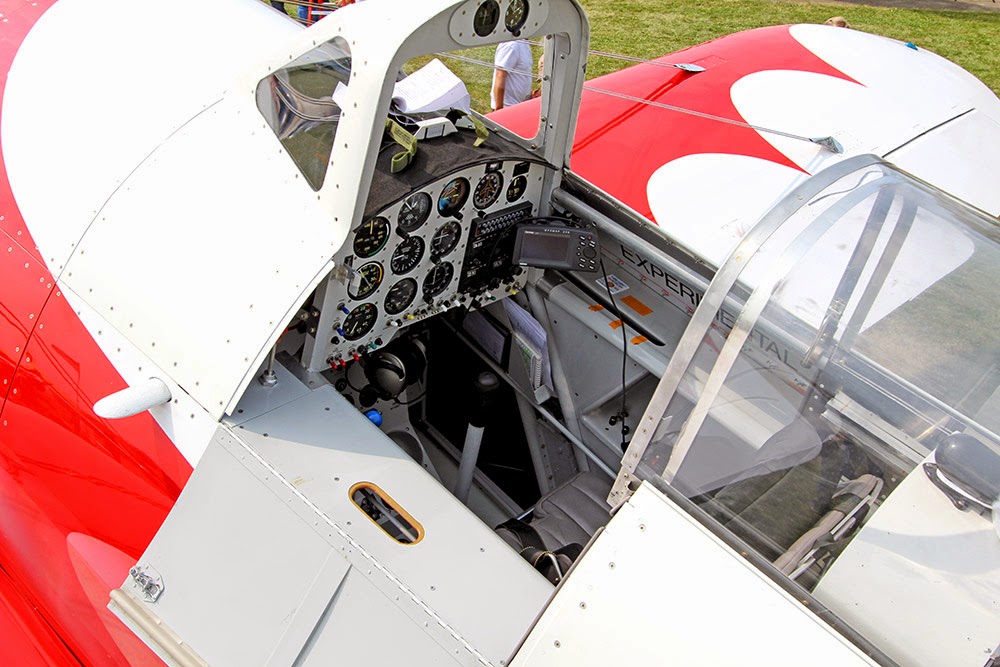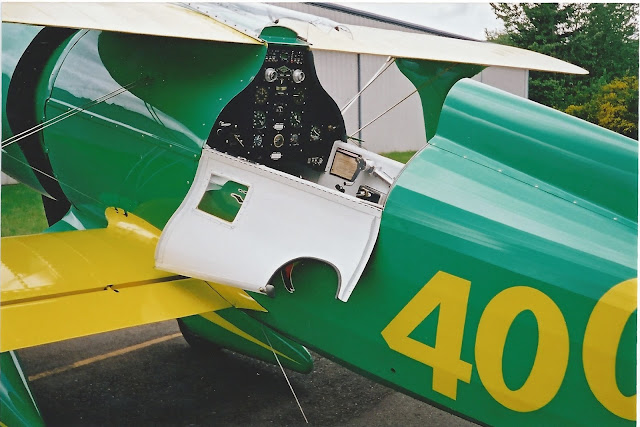While I have yet to have notable progress to report on the Super Solution, I thought it was time to update the progress on some of the racers previously shown, and illustrate their current status.
First up, the incredible Gee Bee QED built by Jim Moss, along with his dedicated group of friends and craftsmen. Jim passed away in September 2013, age 81, and sadly missed the first flight of his QED by less than a month, but the aircraft was completed and flown by his friends as a tribute to Jim.
The QED was flown initially by the very capable Carter Teeters, and the flying duties were subsequently taken over by Rich Alldredge who also headed the team of builders who completed the QED.
Rich and the crew, along with Jims wife Judy made the decision to bring the big racer to Oshkosh, which turned out to be a trouble free and speedy journey.
The QED was a highlight of Oshkosh, parked directly in front of the Vintage Barn, it was an incredible sight.
Rich Alldredge also flew the aircraft one day during the display, giving everyone a unique opportunity to see a QED fly. The racer is limited to under 300 KTs, so its barely getting out of first gear!
Jim was along for the ride........in spirit :)
Thanks Jim, you have been quite an inspiration!
Next up the beautiful Travel Air Type R Mystery ship, owned by Richard Seeley, built by Ron Souch, and flown by Jeremy Cooke. Based at Turweston in the UK, the racer first flew in 2013.
The stunning Type R Mystery Ship replica has since been displayed at a number of equally beautiful venues, including Shuttleworth, Old Warden.
I have not quite worked out the significance of the #29, other than the year it first raced?
This aircraft has beautiful lines. Amazingly this now makes 2 airworthy Travel Air Type R Mystery ships in the UK, the other being the original ex Pancho Barnes R613K, which unfortunately does not get out much.
Sticking with the UK, recently flown was a replica of the 1930`s Percival Mew Gull racer, built over a period of 6 years, and flown this last summer by its builder, David Beale.
The Percival Mew Gull was made famous by noted Spitfire test pilot Alex Henshaw, who flew one from the UK to Cape Town, SA, establishing a record. His book about the flight is a great read!
back to the States, still making great progress, the Gee Bee R2 of Mac Transtrum reached an amazing milestone recently, being rolled out with the wings on for the first time.
I remember how exciting it was to see Steve Wolf reach this point with Delmar's R2 almost 25 years ago, and its just as exciting to see Mac reach this point in the build. The wheel pants are a work of art!
Last, a Racer Replica which may not be widely known, the recently completed Wedell Williams Model 22.
Powered by a Menasco Bucaneer, this Racer is less well known than its big radial powered brothers, but it has tons of appeal, and I love the paint scheme. There seems to be some dispute as to whether it was blue or red, but I think the blue makes a nice change. The replica resides in the Wedell-Williams museum in Patterson Louisiana with another 4 Wedell-Williams replicas.
Speaking of Wedell-Williams and replicas, this one is still patiently waiting to be recreated, the Wedell-Williams Model 44 flown by Roscoe Turner in 1934. The original still resides in the Crawford Museum in Cincinatti.
Should anyone wish to step up the plate.....
These guys are all making me look bad, its time to re-engage with the Super Solution!




















































